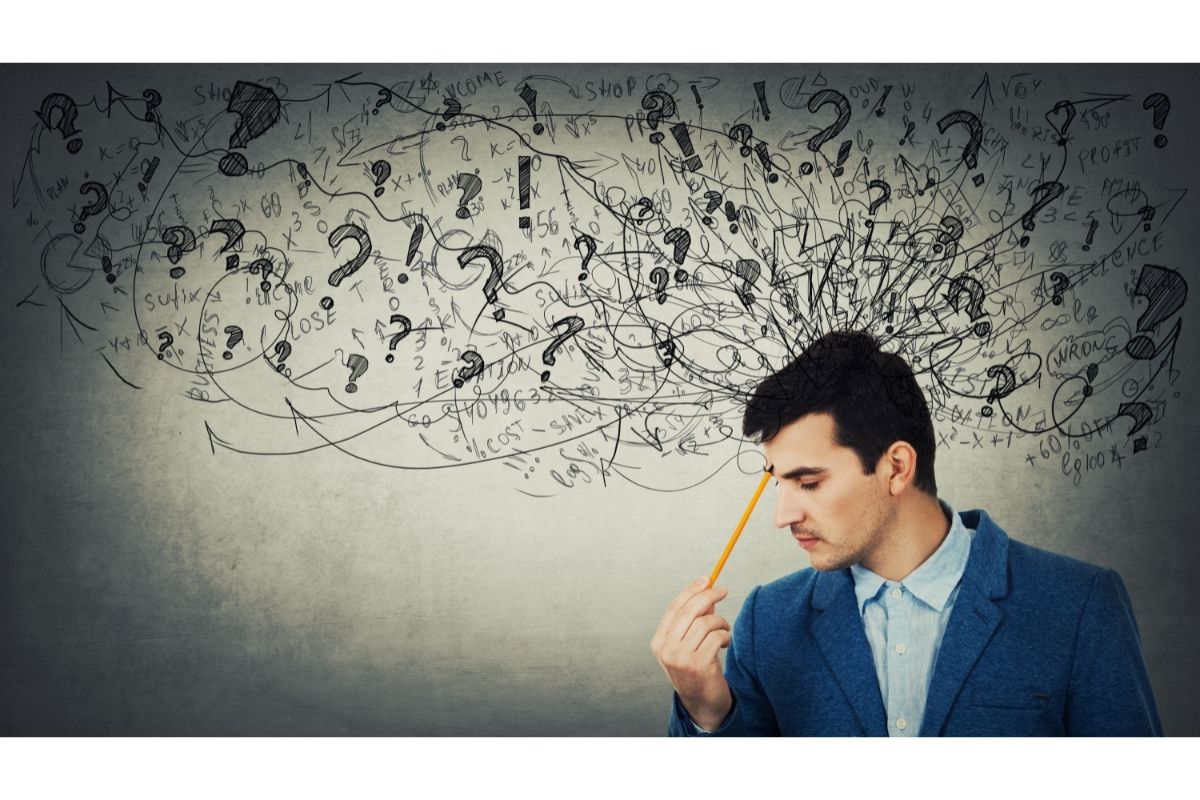What Is The 3 3 3 Rule For Anxiety?

Anxiety can really mess with your focus and make everyday tasks feel impossible.
But don’t worry! Whether you’re dealing with regular stress, freaking out about a big test, or battling an anxiety disorder, there are ways to take control.
I’ve gathered some of the best tricks to help calm those racing thoughts and panicky feelings.
Let me introduce you to the “3 3 3 rule” – it’s a game-changer for managing anxiety. Plus, I’ll share other techniques to help you cope day-to-day.
The 3-3-3 Rule: Your New Secret Weapon Against Anxiety
Ever heard of the 3 3 3 rule? It’s a super simple way to zap stress and stop anxiety in its tracks. Here’s the deal: when you’re feeling overwhelmed, take three deep breaths before you do anything else.
I’ve seen the 3-3-3 anxiety rule work wonders for lowering stress and boosting mood.
Therapists love recommending this technique. It helps you stay focused on the here and now, putting you back in the driver’s seat of your emotions. Want to give it a shot? Follow these steps next time anxiety starts creeping in. This trick might even keep you from feeling sick – check out my article on why anxiety can make you feel ill for more info.
Rule #1: Use Your Eyes
When anxiety starts bubbling up, it’s time to put the 3 3 3 rule into action. Start by taking a chill pill and looking around you.
Find three things you can see. Right now, I’m looking at my coffee mug, a houseplant, and a cozy blanket.
Really look at each thing. Notice the swirls in your coffee, count the leaves on the plant, feel the softness of the blanket.
Rule #2: Tune In To Sounds
Now that you’ve scoped out the scene, it’s time to use those ears.
Listen up and pick out three different sounds. Maybe you hear birds chirping, cars whooshing by, or the hum of your computer.
Pay attention to how each sound is different. Is one high-pitched? Is another rhythmic? Really zero in on those details.
Rule #3: Get Physical
Last but not least, it’s time to get touchy-feely.
Move three parts of your body. Wiggle those toes, roll your shoulders, or tilt your head side to side.
Notice how everything feels. Is the floor cold under your feet? How does your shirt feel against your skin? Focus on those sensations.
By tuning into sight, sound, and touch, you’re creating a mini-symphony of your surroundings. This helps plant you firmly in the present moment, instead of getting lost in worry-land.
Take a second to enjoy this heightened awareness. Feel yourself start to relax.
How Does This 3-3-3 Magic Work?
The 333 rule (aka the 3-3-3 method) is like a secret handshake with reality. It yanks you out of the anxiety fog and back into the real world.
But it’s not just about distraction. There’s more to it.
Anxiety often comes from feeling overwhelmed by things we can’t control. We worry ourselves silly about stuff that might happen.
The 3 3 3 rule is like hitting the reset button on your brain. It shifts your focus to what’s happening right now, not what might go down in the future.
This fresh perspective can help you see things in a whole new light.
The 3-3-3 method is also great for chilling out and de-stressing. It calms your nervous system and slows down that racing heart.
Plus, it helps you tune into your own thoughts and feelings. It’s like a mini mindfulness session.
Bottom line: the 3 3 3 method is an awesome way to reconnect with your senses and get grounded in reality.
More Tricks Up Your Sleeve: Battling Anxiety
1. Hit The Pause Button
Anxiety loves to obsess about the future. Instead, try to focus on what’s happening right now.
Ask yourself: What’s really causing my anxiety? Is there anything I can do about it this very second?
If not, make a conscious decision to put that worry on the back burner. You can always come back to it later when it makes more sense to tackle it.
2. Breathe Like A Boss
I know, I know. Everyone says “just breathe.” But trust me, it works wonders when anxiety starts creeping in.
Take a sec to focus on your breathing. Sit up straight, then take a deep breath in through your nose.
Hold it for three counts, then let it out slowly through your mouth. As you exhale, relax your face, jaw, shoulders, and chest. For more on this, check out my article on relieving tension from anxiety.
This simple trick can slow down your heart rate and even lower your blood pressure. It’s like hitting the brakes on your anxiety.
3. Zen Out With Meditation
Mindfulness meditation is like a superpower for stress relief. It helps you deal with life’s curveballs like a pro.
Start with guided meditation if you’re new to the game. Focus on your breathing and repeat a calming phrase in your head.
Don’t freak out if your mind wanders. Just gently bring your attention back to your breath. If you need a break, take one!
Make meditation a daily habit for maximum anxiety-busting power. Want to learn more? Check out my guide on how to meditate for healing.
Wrapping It Up
Anxiety is tough, but you’re tougher. Loads of people deal with it, and there are tons of ways to keep it in check.
Different tricks work for different folks. The key is finding what clicks for you and sticking with it.
Keep at it, and you’ll build up killer coping skills. Before you know it, you’ll be handling anxiety like a boss.

Author: Michelle Landeros, LMFT
Michelle Landeros is a Licensed Marriage Family Therapist (LMFT). She is passionate about helping individuals, couples and families thrive.






